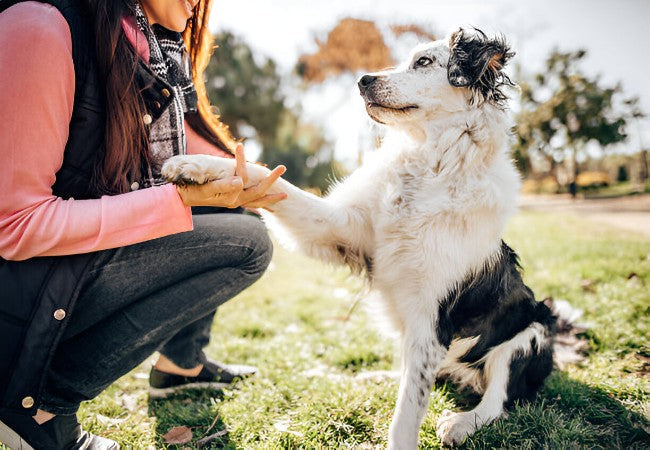How to Train a Deaf Dog: A Vet Approved Guide for 2025 🐶🐾

In this article
How to Train a Deaf Dog: A Vet Approved Guide for 2025 🐶🐾
By Dr. Duncan Houston BVSc
Training a deaf dog may seem challenging, but with the right techniques and understanding, it can be a rewarding experience. 🐕🦺 Deaf dogs are just as capable of learning and thriving as hearing dogs; they simply require alternative communication methods. Let's explore effective strategies to train your deaf canine companion in 2025. 🧠
🔍 Understanding Deafness in Dogs
Deafness in dogs can be congenital or acquired due to factors like age, injury, or illness. Certain breeds, such as Dalmatians, Bull Terriers, and Australian Shepherds, have a higher predisposition to congenital deafness. Recognizing the cause and extent of your dog's hearing loss is essential for tailoring your training approach.
🛠️ Effective Training Techniques
1. Establish Visual Communication
- Hand Signals: Use clear and consistent hand gestures for commands. You can adopt standard signals or create your own, ensuring everyone interacting with your dog uses the same signs.
- Facial Expressions: Dogs are adept at reading facial cues. Smile to convey approval and use a stern look to indicate disapproval.
- Light Signals: Flashing a light can be an effective way to get your dog's attention, especially in low-light conditions.
2. Teach Focus and Attention
Encourage your dog to maintain eye contact:
- “Watch Me” Cue: Hold a treat near your face to draw your dog's gaze, then reward them for making eye contact. Repeat this to reinforce the behavior.
- Positive Reinforcement: Always reward your dog when they check in with you voluntarily, strengthening their focus on you.
3. Utilize Positive Reinforcement
Reward desired behaviors promptly to reinforce learning:
- Treats: Use high-value treats to reward correct responses to commands.
- Touch Signals: A gentle tap can serve as a marker for good behavior, similar to a clicker in traditional training.
- Consistency: Ensure that rewards are given immediately after the desired behavior to create a clear association.
4. Implement Safety Measures
Ensure your deaf dog's safety with the following precautions:
- Leash Use: Always walk your dog on a leash to prevent them from wandering into dangerous situations.
- Secure Environment: Keep your dog in a fenced yard or secure area where they can't escape or encounter hazards.
- Identification: Equip your dog with a tag indicating their deafness, and consider microchipping for added security.
5. Desensitize to Startle Responses
Deaf dogs may be more prone to startle reactions:
- Gentle Touch: Always approach your dog from the front and use a gentle touch to alert them to your presence.
- Desensitization Training: Gradually expose your dog to unexpected touches paired with positive reinforcement to reduce startle responses.
🎯 Additional Tips for Success
- Routine: Maintain a consistent daily schedule to provide structure and predictability.
- Socialization: Expose your dog to various environments, people, and other animals to build confidence and adaptability.
- Professional Guidance: Consider working with a trainer experienced in deaf dog training for personalized support.
📱 Enhance Your Training with Trusted Resources
For additional support and personalized guidance, consider these resources:
- Ask A Vet: Connect with veterinary professionals for expert advice. 🩺
Empower your journey as a pet parent by downloading the Ask A Vet app today and ensure your furry friend thrives in 2025 and beyond! 📲🐾






